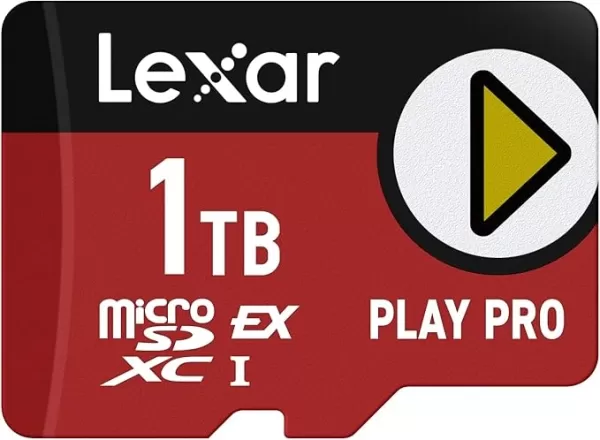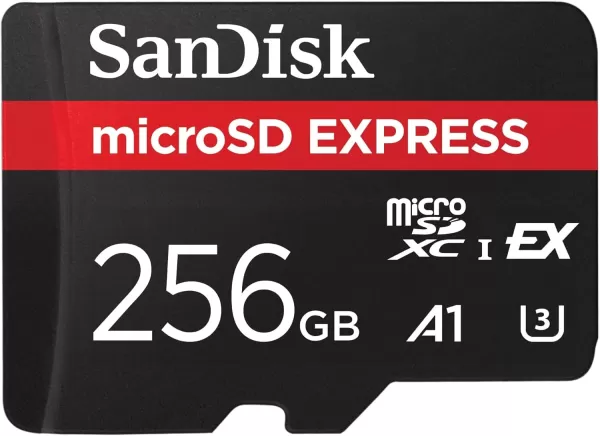Last week, Nintendo unveiled the much-anticipated Nintendo Switch 2, revealing that it exclusively supports expansion via MicroSD Express cards. This move might be inconvenient for those with existing MicroSD card collections, but it's a strategic decision that aligns with the console's performance goals. MicroSD Express cards boast significantly faster speeds, rivaling the UFS (Universal Flash Storage) found in the Switch 2's internal storage. This enables games stored on these cards to potentially load as quickly as those on the internal storage, although at the expense of compatibility with the more affordable, non-Express MicroSD cards.
MicroSD vs. MicroSD Express
The evolution of MicroSD cards has seen six different speed ratings over the years. Starting from the initial SD card speed of 12.5MB/s, which seems slow by today's standards, the progression led to SD High Speed at 25MB/s and eventually to SD UHS III at 312MB/s. The game-changer came five years ago with the introduction of the SD Express standard, which dramatically increased transfer speeds.
The key advancement with SD Express is its use of a PCIe 3.1 interface, a departure from the slower UHS-I interface. This PCIe interface, also used by high-speed NVMe SSDs, allows full-sized SD Express cards to achieve data transfer rates up to 3,940MB/s, a vast improvement over previous SD cards.
While MicroSD Express cards don't reach the top speeds of their full-sized counterparts, they still offer impressive performance, with speeds up to 985MB/s—three times faster than the fastest non-Express MicroSD cards.
Why Does the Switch 2 Require MicroSD Express?
Nintendo's decision to mandate MicroSD Express cards for the Switch 2's expansion might not come with explicit reasoning, but the benefits are clear. The primary advantage is speed. A game on a MicroSD Express card will load much faster than one on a traditional UHS-I MicroSD card, thanks to the PCIe 3.1 interface. This could set a precedent for future handheld gaming PCs as well.
With the internal storage of the Switch 2 upgraded to UFS from eMMC, it's logical for Nintendo to ensure that expansion storage matches this speed. Early demos have shown significant reductions in load times, from a 35% faster fast travel in Breath of the Wild as reported by Polygon, to a threefold improvement in initial load times according to Digital Foundry. These improvements might be due to faster internal storage, but could also reflect the capabilities of the new CPU and GPU, which can process data more efficiently. The point is, to prevent future games from being bottlenecked by slower storage, Nintendo needed the external storage to keep pace.
This requirement also paves the way for even faster storage solutions in the future. The current fastest standard, SD 8.0 Specification, allows full-size SD Express cards to reach speeds up to 3,942MB/s. While MicroSD Express cards can't achieve these speeds yet, future advancements could see them reaching similar levels, provided the Switch 2's hardware supports it.
MicroSD Express Capacity Options
MicroSD Express cards have yet to gain widespread adoption, but the launch of the Nintendo Switch 2 is expected to change this. Currently, options are limited. Lexar, for instance, offers a single MicroSD Express card in capacities of 256GB, 512GB, and 1TB, with the 1TB variant priced at $199.

Lexar Play Pro MicroSD Express
SanDisk, meanwhile, lists one MicroSD Express card on its site, maxing out at 256GB, which matches the internal storage of the Switch 2. As the Switch 2 hits the market, it's unlikely that many MicroSD Express cards will be available with capacities over 512GB. However, this is expected to change rapidly as companies like Samsung begin to produce more of these high-speed memory cards.






![Chubby Story [v1.4.2] (Localizations)](https://images.737c.com/uploads/85/1719638042667f981a5e9f8.jpg)


